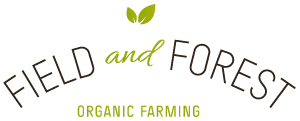Adapting wild plant species to organic farming
Researchers from the SIA “Field and Forest” and the Institute for Environmental Solutions (IES) introduces 9 wild medicinal and aromatic plant (MAP) species suitable for growing in organic farming. In March, researcher Dr Arta Kronberga was invited to share IES’s experience in the international conference “Breeding and seed sector innovations for organic food systems”.
IES in cooperation with organic farming company SIA “Field and Forest” and Latvian Institute of Organic Synthesis study the cultivation potential of 9 wild spring MAP species – cowslip (Primula veris), woodruff (Galium odoratum), mezereon (Daphne mezereum), coltsfoot (Tussilago farfara), pasqueflower (Pulsatilla pratensis), lily of the valley (Convallaria majalis), ground-ivy (Glechoma hederacea), greater celandine (Chelidonium majus) and lady’s mantle (Alchemilla spp).
“Latvia’s wild medicinal and aromatic plants have a high potential for growing in organic farming and further use as an ingredient for production of medicinal, food and cosmetic products. At the same time, more than 90% of MAPs are collected by wild harvesting. We foresee that commercial cultivation of wild plants could help to meet the growing market demand, thus reducing the pressure on wild populations,” Dr Arta Kronberga describes the importance of this research.
Additionally, researchers carry chemical analysis of the wild plants to evaluate how the concentrations of active compounds change due to different factors, for example, growing and climate conditions. As Dr Arta Kronberga explains: “we are developing organic farming cultivation methods for each of the 9 wild plants. This approach will show us which populations are suitable for commercial cultivation and can guarantee the highest concentrations of active compounds, thus providing the requested quality for medicine, cosmetic and food production.”
The research is a part of the project “Innovative solutions for growing technologies and applications of spring medicinal and aromatic plants” (Nr. 1.1.1.1/18/A/043). It is supported by European Regional Development Fund, as a part of Measure 1.1.1.1 “Industry-Driven Research” of specific objective 1.1.1 “To increase the research and innovation capacity of scientific institutions of Latvia and their ability to attract external funding by investing in human resources and infrastructure”.
More about the ongoing research and project here.
